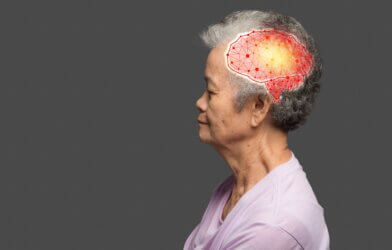Memory loss is a normal result of aging, however, people who suffer from memory loss early on may have a higher risk of developing Alzheimer’s disease later in life. According to a new study, the risk of Alzheimer’s disease can be predicted for the Subjective Cognitive Decline, SCD. People who see themselves as being cognitively impaired can now be tested for Alzheimer’s disease via a blood test.
Approximately 203 blood samples from an SCD data group in the Alzheimer Center in Amsterdam were analyzed. The Immuno-Infrared Sensor test revealed all SCD participants who developed Alzheimer’s dementia within six years of entering the study. The test also revealed which participants had a low risk of developing the disease within six years.
Infrared sensors found proteins in the blood that were not properly folded. Due to misfolding, these proteins become non-functional. In particular, the protein amyloid-beta (Aβ) peptide is a marker for Alzheimer’s and was found in all 22 participants who developed the disease.
According to the study, the severity of the misfolding determines the time in which patients develop symptoms. Those with proteins only slightly misfolded developed symptoms within 3.4 years, compared to those with severe misfolding who developed symptoms within only 2.2 years.

According to statistician Nina Timmesfeld, SCD participants with slight misfolding have an increased risk of developing the disease by 11 times. Those with severe misfolding have an increased risk of developing Alzheimer’s by 19 times.
“Misfolding of Aβ is, therefore, a very precise prognostic plasma biomarker,” concludes Klaus Gerwert, biophysics professor and team lead.
Additionally, researchers combined the analysis of protein folding with decreased concentrations of a separate biomarker, which increased the accuracy of the test. “We can now very accurately predict the risk of developing clinical Alzheimer’s disease in the future, with a simple blood test on symptom-free individuals with subjective concerns. However, we can just as confidently give the all-clear for SCD patients who have a very low probability of developing Alzheimer’s disease in the next six years,” said Professor Gerwert.
“Through the plasma biomarker panel, we can monitor disease progression over 14 years, beginning in the asymptomatic state with misfolding of Aβ and subsequent plaque deposition of Aβ42 in the brain associated with the first cognitive impairments,” adds Julia Stockmann, of the Bochum Research Center for Protein Diagnostics.
The drug aducanumab has been approved by the U.S. FDA as a possible treatment for Alzheimer’s. Researchers hope to use the Immuno-Infrared test alongside the new drug to combat the symptoms early on. “Our results indicate that Alzheimer’s drugs should be applied as early as possible in a non-clinical stage to improve therapy response,” said Professor Gerwert.
This study is published in the journal Alzheimer’s Research and Therapy.












